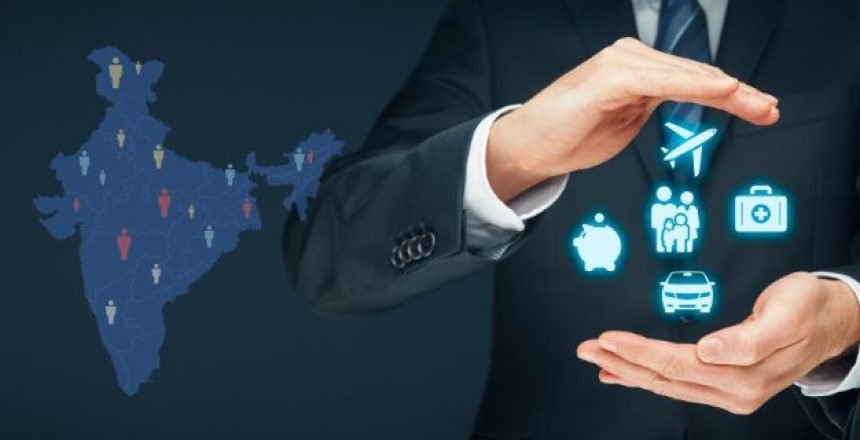Indian Insurance Sector: Challenges and Opportunities
The Indian insurance regime is ready to launch its brand new amendments for 2024. The digital ecosystem has given businesses total comfort in managing their funds. Clients now have access to paperless transactions and receive clearer, more transparent information. A highly promising impact is set to be achieved, as understood during policy formulation by the insurance sector this time. Prioritizing the mindset of its investors and stakeholders, we must recognize that cash flow occurs exclusively through investments, which bridges the economic system’s gap. Technology and AI have revolutionized how we understand customer preferences and customize deals, creating a perfect balance. These advancements in finance open up exciting opportunities for growth and innovation. Our objective here is to educate on where the primary focus of the Indian insurance business lies. How they carry out actions to help the transformation of economic deficits. What innovative steps will Indian Insurance Sector implement in 2024?
Challenges in the Indian Insurance Sector in 2024
Regulatory Changes
The Indian insurance sector grows through expanding networks, aiming to protect and fairly serve all policyholders while encouraging greater participation. The government plays an important role in managing and regulating the business, which presents obstacles for insurance companies trying to adapt to new rules and policies. Changes overseen by the IRDAI in regulations can affect product offerings, pricing, and business operations.
The dominance of State-Owned Enterprises
State-owned enterprises continue to lead the Indian insurance market, driven by the government’s goal to expand coverage in rural areas and support national development. This dominance poses challenges for private and foreign insurers, who struggle to innovate and compete due to regulatory favoritism and established competition.
Structural Inefficiencies and Red Tape
The Indian insurance sector faces inefficiency due to over-regulation and complex rules, causing confusion among users. Simplifying processes and maintaining transparency can enhance customer satisfaction, fostering growth and innovation. Streamlined procedures can boost competitiveness, creating a more dynamic and responsive industry.
Aligning with Changing Customer Preferences
As India shifts from liberalization to the digital age, customer preferences rapidly evolve. Insurance has transformed from agent-driven and savings-focused to diverse, transparent, and digital. Online platforms now simplify processes, offering tailored products, easy claims, and value-added services, driving customer satisfaction and unlocking new opportunities.
Opportunities in the Indian Insurance Sector in 2024
Rising Incomes and Financial Inclusion
With India’s economy growing steadily, household incomes are on the rise, and the disposable income, enable people to invest in insurance. This surge in demand for diverse products—from health and life insurance to property and investment-linked policies—fuels innovation, leading to tailored solutions for various population segments.
Increasing Digital Adoption
Earlier, insurance policies often relied on personal relationships, sometimes overlooking the actual benefits to the customer. Digital processes ensured transparency, efficiency, and a customer-centric approach. The shift to digital means adopting paperless procedures, assuring benefits with handy technologies like AI, data analytics, and blockchain to improve policy management, risk assessment, claims processing, and customer service.
Niche Segments and Partnerships
Targeting niche segments and forming strategic partnerships drive growth sector. The insurance sector should step in as a lifeline for people, promising protection in times of uncertainty. Insurers should collaborate with tech firms and healthcare providers to create personalized, accessible, and affordable insurance solutions. This provides the marginalized an opportunity to live with dignity and security.
Leveraging Technological Advancements
Technology integration is set to create a robust support system for users. For example, analyzing user driving habits through information systems helps select the right car insurance scheme. Frequent commuters might receive higher coverage, while traditional drivers get standard options, ensuring beneficial, tailored policies. Chatbots and integrated systems guarantee super-satisfied customers with round-the-clock support, resolving issues promptly. Despite the tricky market dynamics, AI assistance provides deeper insights, allowing for informed risk-taking and remarkable opportunities for expansion and innovation.
The Indian insurance sector in 2024 and beyond depends on how effectively it balances challenges and seize opportunities. To shape a new generation of market-ready finance experts capable of addressing both Indian and global challenges, institutions like FINSPIRE Academy play a crucial role. Specializing in training for the US CMA and CPA through a scientific learning methodology, FINSPIRE Academy, founded by Ganesh Vaideeswaran—a finance professional with over 35 years of global corporate experience—transforms lives by equipping individuals with the skills and knowledge needed to excel in the evolving financial landscape. For more information, visit FINSPIRE Academy or reach out via info@finspireacademy.com.

